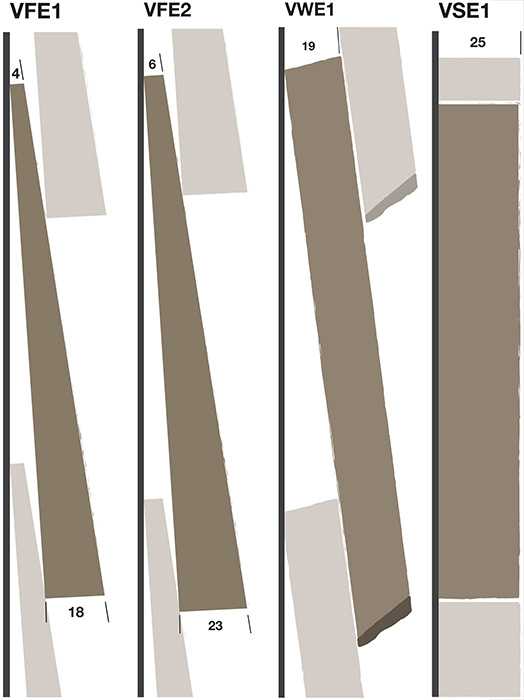Green Oak Cladding
Sawn freshly from logs, green oak is a traditional choice for rustic hardwood cladding. Green oak boards are supplied with a sawn surface and are ideal for oak framed buildings and barn conversions.
Style
Rustic
Profiles
Feather-edge and waney-edge
Source
England and Wales
Beware
Shrinkage and tannin

Green Oak Cladding

Green Oak Cladding
Green Oak Cladding Features
Green oak cladding is a popular choice because of its density, strength and durability. It is most suited to sawn sections such as feather-edge and waney-edge, which create a natural and rustic appearance. Green oak cladding is a relatively cost-effective choice when compared to dry oak.
Being wet, this type of oak cladding will shrink after installation and it is very important to follow our fixing guide to avoid problems as the boards dry.
Oak contains a high tannin content. During the first few months after installation of the cladding, tannin will exude from the boards, resulting in streaks and stains. Tannin will react with and corrode any ferrous metal.
Call us to discuss your project
Specification
Green oak cladding from Vastern Timber
- British / European oak
- Quercus robur
- Legal and well managed forests in England, Wales and France
- Supplied by Vastern Timber (sales@vastern.co.uk)
- Grade : Grade B BS1186-3 1990 Class 3 / EN942:2007 J50
- Random lengths 1.8mt – 3.6mt +, allowing small % down to 1.5mt
- Available in feather-edge and waney-edge profiles
- Supplied Green / wet
- Durability EN350-2 Moderately Durable. Class 3
- Supplied uncoated. No treatment required.
Characteristics
Appearance
Green oak is a pale yellow colour with streaks of pink. As the boards dries the oak takes on a golden colouring. Boards will contain regular sound knots and may contain the occasional worm hole.
Weathering
As green oak weathers, the colour will change to a silver-grey. On shaded elevations or in areas of higher pollution the oak may change to a colour closer to black than grey. In semi-shaded areas such as under eaves, the exuding tannin may leave unsightly stains. As the oak dries out the boards will shrink and are likely to distort to some extent, resulting in a rustic appearance.
Desired service life
Occasionally wet 30 yrs. Frequently wet 15 yrs.
Movement class
Large
Resistance to impact
Medium to high
Working properties
Green oak is generally easy to work and takes fixings satisfactorily, but becomes increasingly difficult as it dries.
Density
670 – 760 Kg / m3 (When dry)
Extractives
Oak contains tannic acid, which will corrode ferrous metals. When the two come into contact, a blue sludge is formed that will stain the oak and anything else it meets. All fixings used in conjunction with green oak should be stainless steel. Tannic acid could also leave unsightly brown stains in the surface of the cladding and will stain any porous materials below the cladding. The reactivity of tannin makes oak cladding unsuitable for polluted areas and shaded areas.
Installation
How to fix
Pre-drill and hand nail with stainless steel nails through the face. We do not recommend nail guns for installation of green oak. Only nail each board once per batten.
For more information, visit the resource centre
Batten type
Treated softwood.
50mm thick x 50mm wide for sawn profiles
Batten spacing
400 – 600mm
Nail type
Stainless steel only. 65mm / 75mm for sawn profiles. Trim head stainless steel screws are also suitable.
When to fix
Autumn and winter months. Installing fresh sawn oak during warm months is not advisable.
Resistance to fixing
High.
Profiles
We produce timber cladding to the profile of your choice. View our full range of cladding profiles
We recommend the following profiles for green oak.
Disclaimer
While the utmost care has been taken to provide accurate information, Vastern Timber shall not be held responsible for any consequences arising from any errors or omissions on this website nor for any damages resulting from the use of the information.






